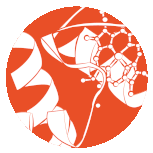
Around town: The 6th International Conference on Fetal Alcohol Spectrum Disorder
 Conferences are great places to hang out if you’re a scientist. The buzz of knowledge fills the air, and it’s often the only chance you get to brainstorm with like-minded enthusiasts in your field. By the end of the conference, you are high on knowledge transfer and giddy with sharing the science…and exhausted. But then you take it all back to your lab and the sharing process begins again.
Conferences are great places to hang out if you’re a scientist. The buzz of knowledge fills the air, and it’s often the only chance you get to brainstorm with like-minded enthusiasts in your field. By the end of the conference, you are high on knowledge transfer and giddy with sharing the science…and exhausted. But then you take it all back to your lab and the sharing process begins again.
This week, Vancouver hosts the 6th Annual Conference on Fetal Alcohol Spectrum Disorder (FASD). Hosted by Interprofessional Continuing Education of the University of British Columbia, the conference brings together delegates with expertise in research, teaching, counselling, justice and other related fields to highlight recent research progress. It is truly a multidisciplinary event, because FASD affects people in so many different ways and touches every level of society. Read on to learn a little more about what’s happening in your neighbourhood and beyond.
What is FASD?
“FASD” is what’s known as an umbrella term, covering a wide range of neurological, behavioural and developmental disabilities, each grouped under different diagnostic headings. It is a congenital disease, caused by excess maternal alcohol intake around conception and pregnancy. Although early identification is important, it remains a difficult condition to diagnose. This is due to the wide variation in presenting signs, ranging from physical appearance to neurological deficits, behavioural disabilities and growth delays. Presentation for diagnosis frequently relies on reported maternal alcohol intake, meaning that some children are simply not assessed while young, and their condition goes unreported until they are adults.
Why is early diagnosis important?
Early diagnosis enables prompt intervention in children affected by FASD, providing access to specialized educational initiatives, family support and medical/psychological treatment. If treatment begins early, it can minimize the barriers and discrimination that children with FASD often face.
What impact does FASD have?
Various studies worldwide show the long-reaching effects FASD, including how it influences educational achievement in affected children during school years, which in turn influences successful entry into adult life. Studies have shown that children in care are more likely to be affected by FASD1 and that prison populations also show this bias.2 Youth with FASD are 19 times more likely than their unaffected peers to be incarcerated.
FASD also eats up health care resources. One study estimates that FASD consumes 26% of Alberta’s annual health service utilization costs, racking up $3,400 to $4,100 in extra costs per patient.3 Moreover, initial patient costs are high—around $3,110 to $4,570 per person4—since diagnosis requires assessment in many medical disciplines.
Control
No one yet knows the safe limit for alcohol consumption or the critical moments in fetal development during conception and pregnancy, so the consensus for prevention is that women should avoid all alcohol during conception and pregnancy. Furthermore, as FASD goes hand-in-hand with other important social issues such as poverty, exclusion and addiction, there is no easy cure for this disease. In addition to good maternal education and support, more research is needed into diagnosis and management, family and individual support services, and averting economic crises and preventing marginalization.
As stated in the conference goals and objectives, the purpose of this meeting is to share knowledge and experiences, and to learn from others going through the same experience. FASD isn’t just a Canadian or North American problem—there’s a whole world out there struggling with the same issue, and this week’s meeting is bringing experts from many different fields together in one place to share and communicate their science.
And then they all go home, taking that knowledge back with them to their own communities.
Sharing the science to an even wider audience.
References
1. Lange, S., Shield, K., Rehm, J., & Popova, S. (2013). Prevalence of fetal alcohol spectrum disorders in child care settings: A meta-analysis. Pediatrics, 132(4), doi:10.1542/peds.2013-0066
2. Popova, S., Lange, S., Bekmuradov, D., Mihic, A., & Rehm, J. (2011). Fetal alcohol spectrum disorder prevalence estimates in correctional systems: A systematic literature review. Canadian Journal of Public Health, 102(5), 336–40.
3. Thanh, N.X., & Jonsson, E. (2014). Costs of health services utilization of people with fetal alcohol spectrum disorder by sex and age group in Alberta, Canada. Journal for Population Therapeutics and Clinical Pharmacology, 21(3): 421–30.
4. Popova, S., Lange, S., Burd, L., Chudley, A.E., Clarren, S.K., & Rehm, J. (2013). Cost of fetal alcohol spectrum disorder diagnosis in Canada. PLoS ONE, 8(4), e60434. doi:10.1371/journal.pone.0060434

No Comments